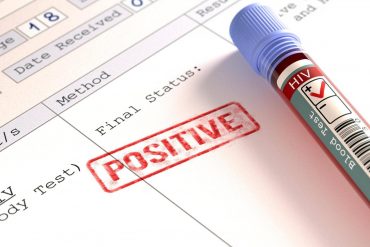This is an excerpt from Second Opinion, a weekly roundup of health and medical science news emailed to subscribers every Saturday morning. If you haven’t subscribed yet, you can do that by clicking here.
Canadians considering gathering with loved ones over the holidays this year need to come to terms with some harsh realities.
The country faces a perfect storm: record rates of COVID-19 amid a growing sense of pandemic fatigue at a time when we typically travel to see loved ones and spend time together indoors.
But COVID-19 is insidious, an unwanted guest that can slip in unnoticed and wreak havoc despite our best efforts to control it.
“We have to ask ourselves honestly, must we socialize? And the answer is probably no,” said Raywat Deonandan, a global health epidemiologist and associate professor at the University of Ottawa.
“There is no way to eliminate risk except not to do it in the first place.”
But we’ve learned a lot more about how COVID-19 spreads since it first emerged at the beginning of this year, which can help inform us on where we’re most at risk.
Confusion over holiday guidelines
There’s understandably a lot of confusion about what sorts of holiday gathering might be reasonable to consider this year, especially since depending on where you live in this country the rules and recommendations differ.
The official advice from Canada’s chief public health officer is to avoid large gatherings, non-essential travel and to keep things as small as possible within your household.
Certain provinces, like Ontario, recommend skipping extended family gatherings altogether and taking precautions like self-isolating for 10 to 14 days for those travelling home from away, including colleges and universities.
While others, like Quebec, have put a lot of faith in their population by allowing gatherings of up to 10 people for four days over the holidays after a seven day period of self-imposed quarantine.
But Deonandan says we can’t necessarily rely on people to completely self-isolate on their own — that requires not leaving home for groceries, essential items or even to walk the dog.
WATCH | Dr. Theresa Tam advises no large gatherings or non-essential travel
Canada’s chief public health officer, Dr. Theresa Tam, says it’s clear that Christmas this year is not going to be like other years. She recommends against any gatherings but has some advice if people choose to forgo the public health guidelines. 0:48
“You’re also going to have outliers who have infectious periods longer than two weeks,” he said.
“If enough people do this, you’re going to get a sufficient number of people who do not fall under that umbrella who are indeed infectious and who start outbreaks.”
Silent spread a ‘key driver’ of outbreaks
While we weigh whether it’s even possible to gather safely with friends and family in a pandemic, it’s important to keep in mind the unseen dangers we could be inviting in — even in parts of the country that have low rates of COVID-19.
“The problem with this virus is that it’s like many other viruses,” said Dr. Allison McGeer, a medical microbiologist and infectious disease specialist at Toronto’s Mount Sinai hospital who worked on the front lines of the SARS epidemic in 2003. “You shed virus before you get sick and some people who get infected don’t develop symptoms.”
“That’s why what has worked is everybody wearing masks and everybody maintaining social distance, because you can’t tell who the next infected person is going to be.”
McGeer says viruses like influenza, chickenpox and measles typically present symptoms in the body before people are infectious — but the virus behind COVID-19 is different.
The U.S. Centers for Disease Control and Prevention released updated scientific guidance this week that acknowledged asymptomatic or presymptomatic individuals account for more than half of all COVID-19 transmissions.
“Silent transmission is one of the key drivers of outbreaks,” said Seyed Moghadas, a professor of applied mathematics and computational epidemiology at Toronto’s York University.
“There is an incorrect notion in the general population that if someone feels fine then they are not infected. A person can certainly be infected, infectious, and feel completely fine.”

Moghadas, the lead author of a study published in the journal PNAS on the silent spread of COVID-19 that was cited in the CDC guidelines, says this underscores how difficult the virus is to control, a challenge “magnified” in close quarters.
In Nova Scotia, which has successfully contained the spread of COVID-19 throughout the pandemic despite the bursting of the Atlantic bubble this week, catching those silent spreaders before they unknowingly infect others is key.
Dr. Lisa Barrett, an infectious disease specialist at Dalhousie University, has partnered with public health authorities in a pilot project to use rapid COVID-19 tests on people without symptoms in high-traffic areas of Halifax.
It’s only been a few days, but what they’ve found was surprising.
On the first day they tested 147 people and found one asymptomatic case, the second day they tested 604 more and found another one, and on the third day they did 804 tests and found five more.
“We recognized that there are a lot of people out there, even if they’re doing the right thing, that don’t know they’re infected, don’t know they’re infectious and could be spreading to other people,” said Barrett.
“When there’s community spread of a virus that has a long period of time when you can be infectious without symptoms, you have to test broadly in the community or you have no idea what’s going on.”
‘A negative test is not a license to socialize’
One novel approach to avoid meeting with loved ones while unknowingly infectious that has emerged is to get a COVID-19 test beforehand to pre-emptively detect it.
But the timing of that test is incredibly important and there’s a lot of room for error, so it may be a less effective strategy than it first appears.
A new study in the journal Science looked at 1,178 people infected with COVID-19 and more than 15,000 of their close contacts to determine when people were most infectious.
It found most of the transition — 87 per cent — happened in a fairly wide window of time, up to five days before or after symptoms appeared, while 53 per cent was in the pre-symptomatic phase.
“It’s possible to be early in the disease cycle such that you won’t detect any viral presence. But in two days suddenly you’re infectious and now we’re screwed,” said Deonandan, at the University of Ottawa.
“So a negative test is not a license to socialize.”
Still, Deonandan says there will be people who are going to socialize anyway, so it’s better they do so with precautions in place like testing and self-isolating than nothing — even if those precautions aren’t perfect.
Whether you celebrate Christmas, Hanukkah, Kwanzaa or the winter solstice, Canadians are being told to consider meeting virtually, avoid risky indoor gatherings without masks and instead find ways to connect while still physical distancing.
“I think the pitch to people is that yes, we’re used to having time off school and we’re used to seeing everybody,” said McGeer. “But this is the year to delay.”
WATCH | Tam on the holiday season and how the pandemic won’t go on forever
Canada’s Chief Public Health Officer Dr. Theresa Tam talks to The National’s Andrew Chang about the holiday season and getting to the end of the COVID-19 pandemic. 6:31
“The best advice this year is maybe not to go too far from home,” said Barrett. “Is it worth it to lose control of the virus?”
“We’re hanging on by a thread here. Please don’t let that thread break.”
To read the entire Second Opinion newsletter every Saturday morning, subscribe by clicking here.

Devoted web advocate. Bacon scholar. Internet lover. Passionate twitteraholic. Unable to type with boxing gloves on. Lifelong beer fanatic.







